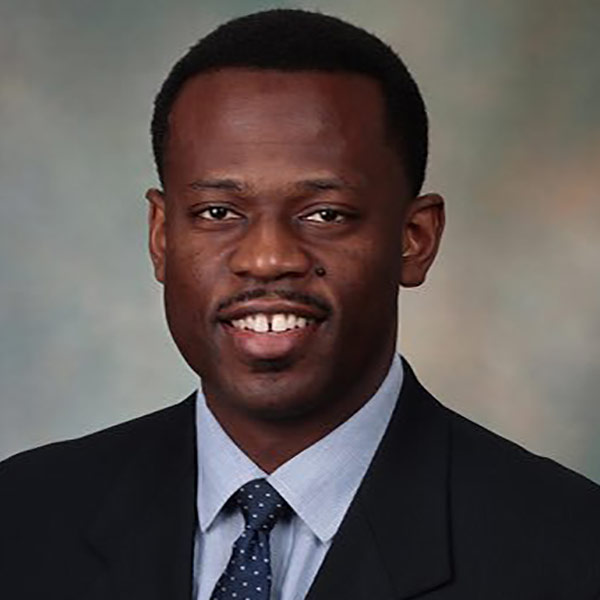Haider Warraich, MD: the Medical Griot
In West African tradition, a griot is a storyteller. Before written history, the griot was central to every community, charged with preserving and narrating local history, analyzing cultural norms, and providing entertainment. A modern-day griot may resemble an amalgamation of Ava DuVernay, Aesop, and Henry Louis Gates Jr. ACC Humanities 2022 has explored careers of cardiologists crafting meaningful lives through the humanities. In this chapter, we feature advanced heart failure and transplant cardiologist Dr. Haider Warraich.
Hailing from Pakistan, Warraich has forged equally impressive careers as a clinician, investigator, and author. Likely by design, each experience is complementary. Ultimately, his work as an author may have the greatest reach. What distinguishes Warraich from other medical griots, such as his inspirations, Drs. Siddhartha Mukherjee and Atul Gawande, is Warraich's more explicit emphasis on storytelling as an underutilized act of patient advocacy that every physician has capacity for.
Dr. Warraich's approach to writing is like akin to the late novelist Aldous Huxley, whose method was described as, "interrogating each topic like his life was on trial." Like a scalpel, Warraich uses history, epidemiology, biology, theology, anthropology, sociology, economics, and politics as tools to rigorously assess and contextualize topics such as modern medicine's influence on death, the history/future of cardiology and pain. Warraich employs narrative medicine to open new worlds for his readers. For the general public, Warraich helps deconstruct myths and illustrates challenges of being a physician. For physicians, he explores topics we encounter routinely, despite their outright absence in our formal education or exposure to only sanitized versions taught without biopsychosocial consequences. As a skillful designer creates tapestry from seemingly unrelated pieces of fabric, Dr. Warraich links seemingly unrelated observations—such as the Civil War, Purdue pharmaceuticals, and the modern opioid epidemic—helping the reader understand the multifaceted forces contributing to modern health care delivery and health outcomes.
He does not spare medicine, highlighting several examples of inertia upholding dogma despite mounting evidence. Hypertension is still referred to as essential hypertension, as higher pressures were historically considered a sign of a healthy heart. It was the death of President Franklin Roosevelt that led to the identification of hypertension as a negative cardiovascular risk factor. Dr. Warraich also highlights the disconnect between the siloed fashion in which medicine is taught and the way medicine is actually practiced. For example, obtaining a spiritual history is rarely taught in medical school, although religion affects how patients behave and respond to (particularly critical) illness. Furthermore, Dr. Warraich describes the history of disinformation across millennia, illustrating how it can thwart progress. For example, William Harvey largely introduced the scientific method to cardiology, publishing experiments proving the heart—not the four humors or liver—was responsible for circulation of blood throughout the body. This contrasted with the prevailing theory that the heart heated the body, and the lungs cooled the heart. Dogma, without evidence, prevented widespread acceptance of Harvey's findings for decades.
Stories can be a vehicle to build trust and effectively convey information. Warraich feels that in order to achieve large-scale gains in healthcare delivery, physicians must improve at telling patient stories, while communicating with patients that science is a dynamic journey of incremental gains. We can leverage our existing doctor-patient relationship to help patients filter true signal from noise.
Let's examine this assertion about storytelling more closely. Intuitively, it makes sense—after all, we vividly remember our favorite movies and television shows. However, can we truly expect to create lay statisticians when patients have limited health literacy? How can we practically incorporate storytelling into 30-minute patient encounters? Dr. Melanie Green, a Professor at University of Buffalo studying doctor-patient communication, notes that anecdotes make health advice relatable to patients, alter broader attitudes, and serve as vehicles for patients to adopt specific behaviors. For example, stories of other patients successfully quitting smoking or adopting a Mediterranean diet with expected benefits sound less like commands, and model desired behavior. Patients are more likely to persevere if they identify with the protagonist. The act of storytelling is also associated with increased oxytocin release, reduced cortisol levels, and myriad psychological benefits.
Further, functional MRI (fMRI) scans show activation of the limbic system (regulating emotion, learning, and fear) in response to stories. fMRIs demonstrate that brain waves of listeners actually synchronize with the storyteller, with greater brain wave pattern synchronization corresponding with greater comprehension. Dr. Warraich explores the scientific link between fear and learning in "The Song of our Scars." Wisely wielded stories can become the teaspoon of sugar to make the medicine go down.
Storytelling can be a powerful tool to achieve both patient and individual results, utilizing the brain's existing neural network. Each patient encounter is an opportunity to invoke the griot tradition, towards improved patient outcomes.

This article was authored by Olubadewa A. Fatunde, MD, an FIT at Mayo Clinic Arizona. Twitter: @BFatundeMD
This content was developed independently from the content developed for ACC.org. This content was not reviewed by the American College of Cardiology (ACC) for medical accuracy and the content is provided on an "as is" basis. Inclusion on ACC.org does not constitute a guarantee or endorsement by the ACC and ACC makes no warranty that the content is accurate, complete or error-free. The content is not a substitute for personalized medical advice and is not intended to be used as the sole basis for making individualized medical or health-related decisions. Statements or opinions expressed in this content reflect the views of the authors and do not reflect the official policy of ACC.
